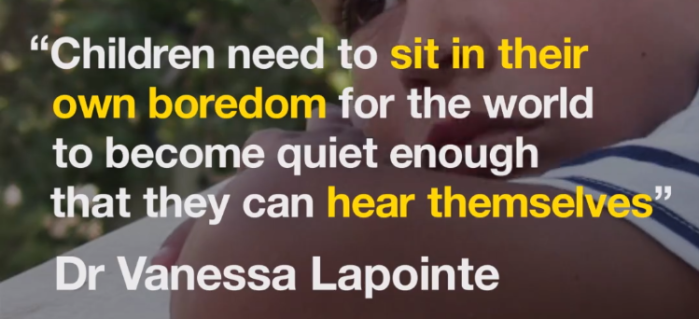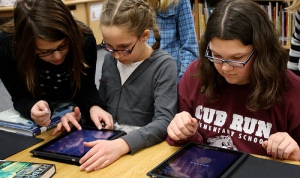
How many times have you heard these words from your child:
“I’m bored.”
As a parent of three sons, I can understand how relentless the demands are to try and keep your children active, occupied and engaged with the activities that you have carefully planned for them. who wouldn’t want to try and make your family holiday as exciting as possible/ Or to make the home time during mid-term break as interesting as possible?
It turns out, though, that what might seem a great idea and good parenting might be actually inhibiting something that we are trying desperately to encourage in our kids: creativity.
Recent research has shown strong links between the perception of “boredom” in children and the importance it plays in instilling creativity.
As this blogger explains:
“Sporting, musical and other organised activities can certainly benefit a child’s physical, cognitive, cultural and social development. But children also need time to themselves – to switch off from the bombardment of the outside world, to daydream, pursue their own thoughts and occupations, and discover personal interests and gifts..”
This short video and article published by the World Economic Forum outline a few interesting points to consider.

Any time you are heading into a week of rest and respite from the demands of formal learning, I would encourage you all to think about how much you may be trying to “cram” into the holiday next week. Is there time for your child to experience boredom and further their development of enquiry and resilience and creativity?

I absolutely understand how demanding parenting is… but maybe some of those demands are ones we are placing on ourselves in pursuit of “entertaining” our kids and keeping them from becoming bored – which might be just the thing they need to help them grow into the creative and innovative leaders of tomorrow!

 One of the things that teachers spend a lot of time considering is how to keep students motivated and engaged with their learning. This is not as easy as it sounds – just ask any adult volunteer at a kids’ party or a sports club training day! One solution, which many people implement for short-term benefit and exigency, is to use a system of rewards.
One of the things that teachers spend a lot of time considering is how to keep students motivated and engaged with their learning. This is not as easy as it sounds – just ask any adult volunteer at a kids’ party or a sports club training day! One solution, which many people implement for short-term benefit and exigency, is to use a system of rewards. They described six key aspects:
They described six key aspects:



